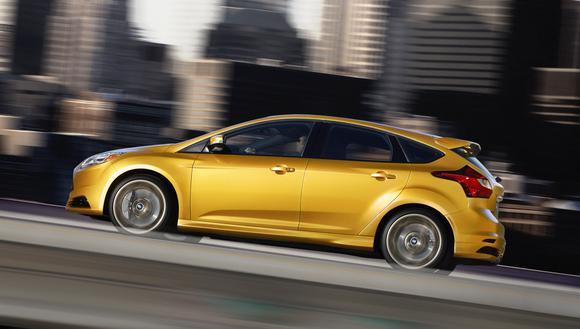Filed under: Company News, Industry News, Automotive Industry, Ford, Investing

Ford (F) is expected to unveil a slew of new high-performance models at next week’s North American International Auto Show in Detroit, its first move in a major high-performance push that will bring “more than 12” new go-fast models to market by 2020, it says.
So far, Ford has confirmed only that a super-hot new Focus model, the RS, will appear. But the company has hinted that a high-performance “Raptor” version of its new F-150 pickup could debut — and there are rumors that a new Ford sports car could be revealed as well.
Fast, sexy sports cars (and trucks) make for great headlines — and they help draw enthusiasts to a brand. But they also make good business sense. Here’s why.
High-Performance Models Are About Attracting the Right Customers
There are several good reasons that a mainstream brand like Ford might want to put time and effort into developing high-performance models. But big sales isn’t one of them.
While the V8-powered GT version of Ford’s Mustang sells well, higher-performance models are typically niche products. That niche is growing — Ford says that sales of high-performance models have risen 70 percent in the U.S. since 2009, and 16 percent in Europe over the same period — but it’s still small. High-performance versions of mainstream models generally make up less than 10 percent of the model’s total sales.
But those sales can be very profitable. Ford’s compact Focus starts at under $17,000, but the sticker price on a loaded high-performance ST model is close to $29,000. There’s a lot of profit for Ford in that $12,000 difference.
But perhaps more important, high-performance models are a way to bring new buyers to a brand. Ford reports that more than 65 percent of those who buy its “hot-hatch” Focus ST and Fiesta ST models are new to the brand. And they stick around: More than half of those who buy a high-performance Ford go on to buy another Ford product, the company says.
Even more important, those buyers tend to be younger — a critical factor for Ford and other automakers who have struggled to engage “millennials,” or those born between 1980 and 2000. Fiat Chrysler (FCAU) has said that its effort to remake the Dodge brand with a performance-oriented lineup is about attracting younger buyers. And Ford says that millennials buy its ST models at twice the rate they buy other Ford products.
Fast Cars Help Automakers Hire Great Engineers, Too
The case for high-performance cars like the Focus and Fiesta ST goes beyond sales and marketing. Ford and other automakers say that high-performance cars and racing programs provide great training and motivation for their engineers and designers — and help them hire and retain top talent.
In addition, the technology that comes out of high-performance efforts often makes its way into mainstream models over time. Fiat Chrysler engineering leaders have said that the lessons learned during development of the company’s extreme “Hellcat” V8 engine will help make its mass-market engines more fuel-efficient.
But it’s the way that models like the Focus ST and FCA’s Dodge Challenger SRT Hellcat draw enthusiasts to the brand — particularly younger enthusiasts — that make them worth the investment to cost-conscious automakers.
Motley Fool contributor John Rosevear owns shares of Ford. The Motley Fool recommends and owns shares of Ford. Try any of our Foolish newsletter services free for 30 days. Find out the easy way for investors to ride the new mega-trend in the automotive industry in our free report.
Permalink | Email this | Linking Blogs | Comments
Source: Investing

